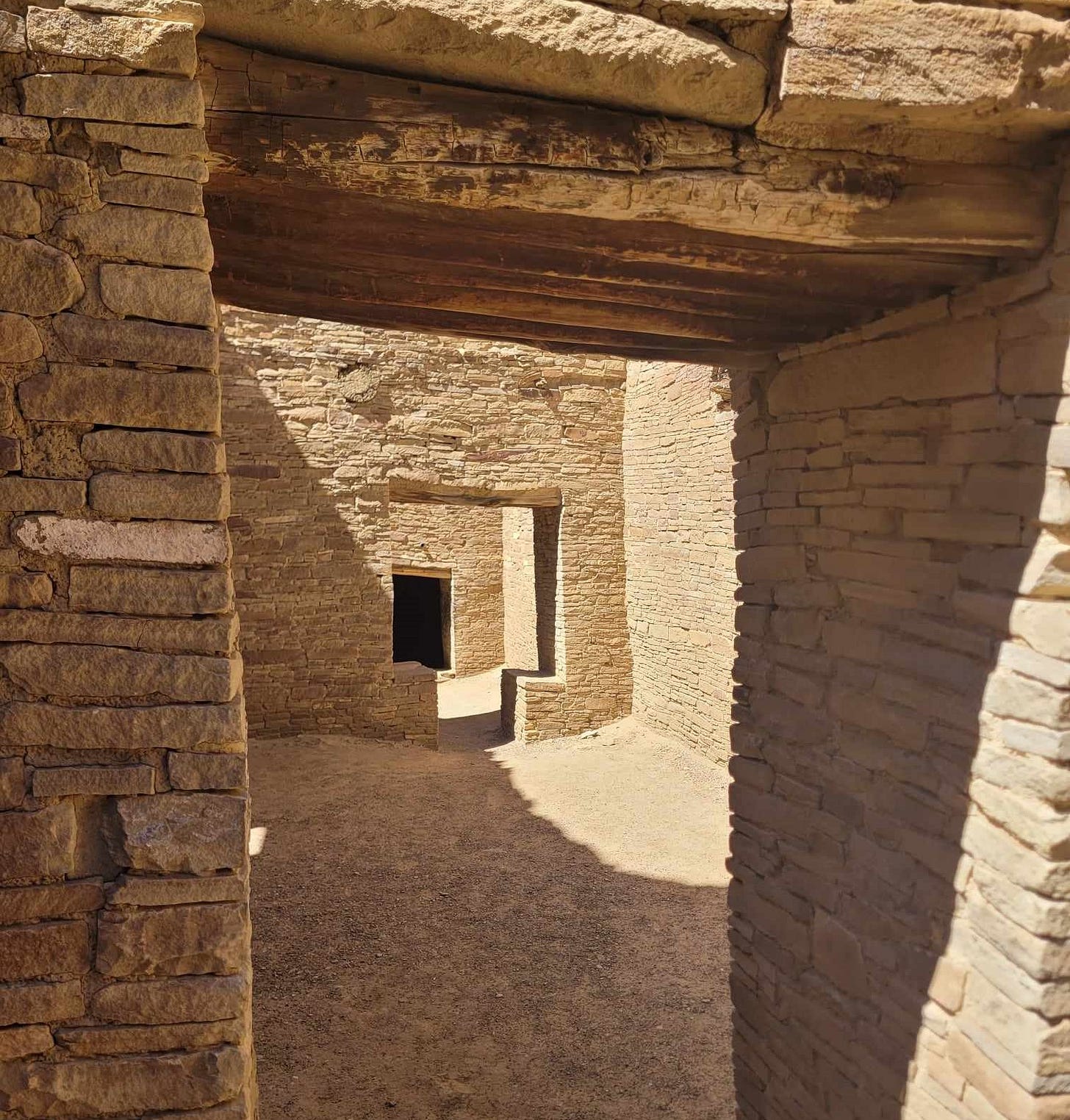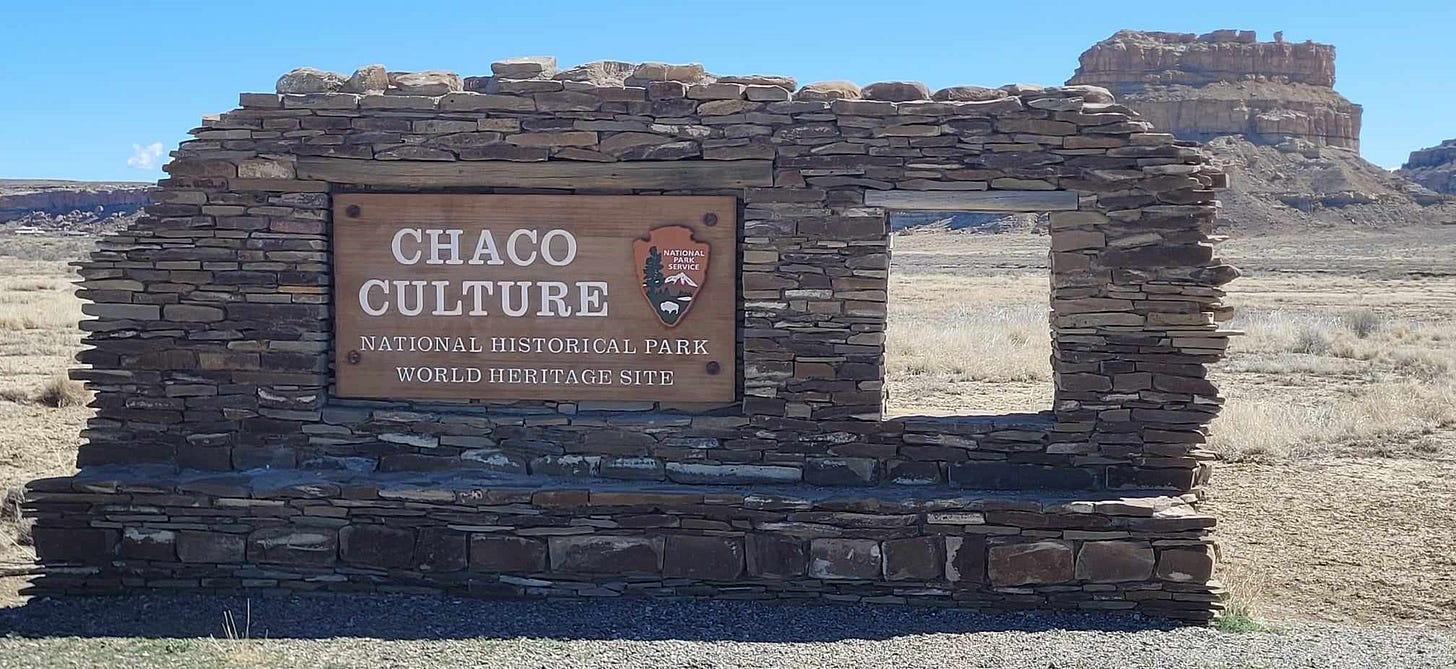Ancestral Puebloan Petroglyph is Believed to be a Depiction of a Total Solar Eclipse
Chaco Culture National Historic Park has Astronomical Rock Art
The Ancestral Pueblo people left images on rock faces to record and follow the cycle of the sun and moon; equinoxes and solstices; and to document extraordinary celestial events. Several pieces of rock art within Chaco Culture National Historic Park likely recorded some special astronomical events of the past. One expert believes he’s found a record of a total eclipse which occurred in 1097 CE (formerly AD).

Many of us were enthralled by the total solar eclipse earlier this month. I was on a road trip in New Mexico at that time and didn’t get to see totality. However, one of the places I visited on this trip was a bucket list item for me: Chaco Culture National Historic Park located in northwest New Mexico. Let’s take a look at the petroglyph that experts believe recorded a total eclipse over 900 years ago.
Piedra del Sol
Piedra del Sol (meaning rock of the sun) is a large, free-standing boulder located not far from the visitor center at Chaco Culture National Historic Park along the Uno Vida Trail.
Apparently, the Ancestral Puebloans had been using this rock as a calendar of sorts. Professor J. McKim ‘Kim’ Malville of the University of Colorado, Boulder would bring his students to this rock and explain its significance.
There’s a large spiral petroglyph on its east side that was used to determine when the summer solstice would take place. A large rock on the horizon would cast a triangular shadow onto the center of the spiral indicating that the solstice would be 15 to 17 days away. On the southwest side of the rock a small butte on the horizon marks the winter solstice. In addition, the rock has carved steps, indicating it likely had some kind of ceremonial importance.

Petroglyph of an Ancient Solar Eclipse?
Petroglyph meanings are open to interpretation because the artist that pecked them into the rock left no explanation or oral history to guide the present-day viewer. Experts, however, may have insight that may help interpret what the artist may have been recording.
During one of his university school trips in 1992, Professor Malville discovered a petroglyph on the south face of Piedra del Sol and reasoned that it may depict the solar corona observed during the total solar eclipse of July 11, 1097 CE. “I think it is quite possible that the Chacoan people may have congregated around Piedra del Sol at certain times of the year and were watching the sun move away from the summer solstice when the eclipse occurred.”

The petroglyph, carved in a rock by Ancestral Pueblo people, is a circle that resembles the sun’s outer atmosphere known as its corona, with tangled protrusions looping off the edges. “To me it looks like a circular feature with curved tangles and structures,” Malville said in a press release. “If one looks at a drawing by a German astronomer of the 1860 total solar eclipse during high solar activity, rays and loops similar to those depicted in the Chaco petroglyph are visible.”

In the year 1860, astronomer Gugleimo Temple sketched what he saw during eclipse totality, drawing what we know today to be a coronal mass ejection.
Petroglyph Depicts a “Solar Mass Ejection”
A coronal mass ejection (CME) is a large release of material from the sun’s surface during active solar maximum periods. CME are not visible to the naked eye, except in the rare case of a total solar eclipse. One tangled loop jutting from the petroglyph circle may illustrate a CME.
“But if the Sun was in a ‘quiet phase’ of its roughly 11-year cycle, one would expect few if any CMEs, and the likelihood of one occurring during a solar eclipse would be negligible” according to Malville. If this petroglyph is a legitimate likeness of an eclipse with coronal mass ejection, the 1097 eclipse would have had to occur during high solar activity. So, Malville set out to prove this.
Could the Scientists Prove High Solar Activity During the Eclipse?
Professor Malville and his colleague, Professor José Vaquero of the University of Extremadura, Spain, used several sources to assess the activity of the Sun around the time of the 1097 eclipse. The three methods included:
data from ancient tree rings, formed annually and which have been cross-dated to create time series going back thousands of years and which also contain traces of the isotope carbon-14;
records of naked-eye observations of sunspots, which go back several thousand years in China;
looking at historical data compiled by northern Europeans on the annual number of nights when the northern lights were visible, an indication of intense solar activity.
“This was a testable hypothesis. It turns out the Sun was in a period of very high solar activity at that time, consistent with an active corona and CMEs,” Professor Malville said. Each of the three methods proved that the sun was at high solar activity during the 1097 eclipse.
Chaco Culture National Historic Park is a Special Place
Between AD 900 and 1150, Chaco Canyon was a major center of culture for the Ancestral Puebloans. The complex of “great houses” that were built are similar to our present-day capital cities. Many of the buildings appear to have been aligned to capture the solar and lunar cycles, requiring generations of astronomical observations and centuries of skillfully coordinated construction.
Researchers have concluded that the complex may have had a relatively small residential population, with larger groups assembling only temporarily for annual ceremonies.
The sites within the park are considered sacred ancestral homelands by the Hopi and Pueblo people of New Mexico, who maintain oral accounts of their historical migration from Chaco and their spiritual relationship to the land.
Climate change is thought to have led to the emigration of the Chacoan people and the eventual abandonment of the canyon, beginning in 1130 with a fifty-year drought.
How to Visit
Chaco Culture National Historic Park is not easy to get to. The park is located in northwestern New Mexico and can only be accessed by dirt roads. Always check current conditions before attempting to travel to the park. If you have an RV and are not planning on camping in the park, you may want to leave the RV and drive a car into the park. I visited in early April; the weather was good, and the roads were dry.
The NPS site cautions that some local roads that are recommended by map publishers and GPS devices may be unsafe for passenger cars or on private property. Please follow one of the several recommended routes that are listed on the NPS website.

The Piedra del Sol and the Eclipse Petroglyph are located near Una Vida (which is a great house ruin).
Next Time
The Chaco culture was at its height during the 11th century. During this time several spectacular astronomical events would have been visible from the canyon. In addition to the total solar eclipse of 1097 which we just covered, two exploding supernovas which happened in 1006 and 1054 were visible during the day. If that wasn’t enough, Halley’s Comet passed overhead in 1066.
A pictograph in the park is believed to depict one of the supernovas. Next time, we’ll look at this rock art and discuss this exploding star and another pictograph that may depict the return of Halley’s Comet. There are so many more fascinating items to explore at Chaco Culture National Historic Park.











We visited Chsco Canyon in the late sixties. On the day we were there, I think there may have been less than five cars at the visitor center..no SUVs they hadn't been invented yet!
My mother was teaching anthropology at the university at the time, and the place so inspired me that I changed majors and got a bachelor's degree in Southwest archaeology!
A picture I took on my phone of the recent eclipse looks somewhat similar. Neat!